
Simca 1000 - Rear Engine Chrysler?
This is one of the many articles published in the monthly NJACE Fanbelt
newsletter.
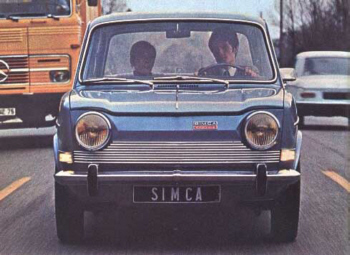
In May 1972, on the banks of the Passaic River, there was a used car lot
with a string of white light bulbs bobbing overhead in the breeze.
Located a couple hundred feet from the iron truss bridge between Wallington
and Paterson New Jersey, this lot catered to customers with a couple of
bucks for cheap transportation. In the front row, rusty Valiants,
Tempests and Fords waited patiently for one last chance to prove their
worth.
A tiny sedan with a few dings rested in peace in the weeds at the edge of
the water. It didn't appear too old, but its owner had cast it aside.
Curiously, this little orphan had a pair of Chrysler medallions fastened to
its fenders.
Although its paint had turned to chalk, its lines were more architectural
than automotive. It's interior was stark, but it had seats that
appeared reasonably comfortable. It had no grille in front, but it had
louvers on the lid of the trunk. And the trunk creaked open to reveal
a tiny engine in the rear. This clever paradox was a Simca 1000,
marketed by Chrysler and manufactured in France.
What is a Simca?
The Simca auto company, or more accurately, "La Societe Industrielle de
Mechanique et de Carrosserie Automobile", began life in 1934 by
manufacturing Fiat cars under license in France. So lucrative was this
business that, in 1954, Simca was able to buy Ford of France, which was
manufacturing mid-size V-8 sedans at that time.
Simca found a market with these near-luxury cars, but when the European
gasoline shortage occurred in the 1956, the company had no expertise to
develop a small car of its own. So Simca again called upon Fiat to
help, even though Chrysler had already purchased a substantial share of the
Simca firm in 1958. The Simca 1000 was the product of this
multinational arrangement.
Rear Engine Car, Almost Done Right.
Unlike many rear engine cars, the Simca 1000 sedan was simple, attractive,
and cheap to manufacture. Introduced in 1961, it remained in
production until 1978, long after most other manufacturers had scrapped
their tooling for rear engine cars.
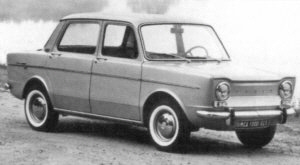
Styled by Mario Boano, creator of the fabulous Lancia Aurelia B20 GT, the
Simca 1000's chiseled appearance anticipated Guigiaro's designs of the
mid-1970s. Although ornamentation changed over the years, only one
real facelift was necessary to keep it fresh.
Italian creativity was also shown in its engineering, attributed to Mario
Revelli di Beaumont and Dante Giacosa. The Simca 1000 was powered by a
944 cc water-cooled in-line four equipped with five main bearings and a
cross-flow cylinder head.
Not a performance car, it made do with 12-inch wheels, drum brakes, worm and
roller steering, transverse leaf front suspension and swing axles at the
rear. Early Simca 1000s were not known for directional stability,
although this was cured as we shall later see.
Performance Arrival.
When introduced in 1961, the Simca 1000 was aimed squarely at the economy
market, and the car's little engine produced only 45 horsepower.
However, from the beginning, Simca 1000s were equipped with a four-speed
gearbox and Porsche synchronizers. This was a platform that would lend
itself to performance. Within a year or two, Carlo Abarth was offering
an 85 horsepower variant with twin Weber carbs.
When Chrysler bought the remaining shares of stock in 1963, Simca was forced
to sever its ties with Fiat and Abarth. But, if anything, this had a
positive effect on Simca 1000 development. By 1970, the factory
upgraded the 1000 with rack and pinion steering, four-wheel disc brakes and
fully articulated rear suspension.
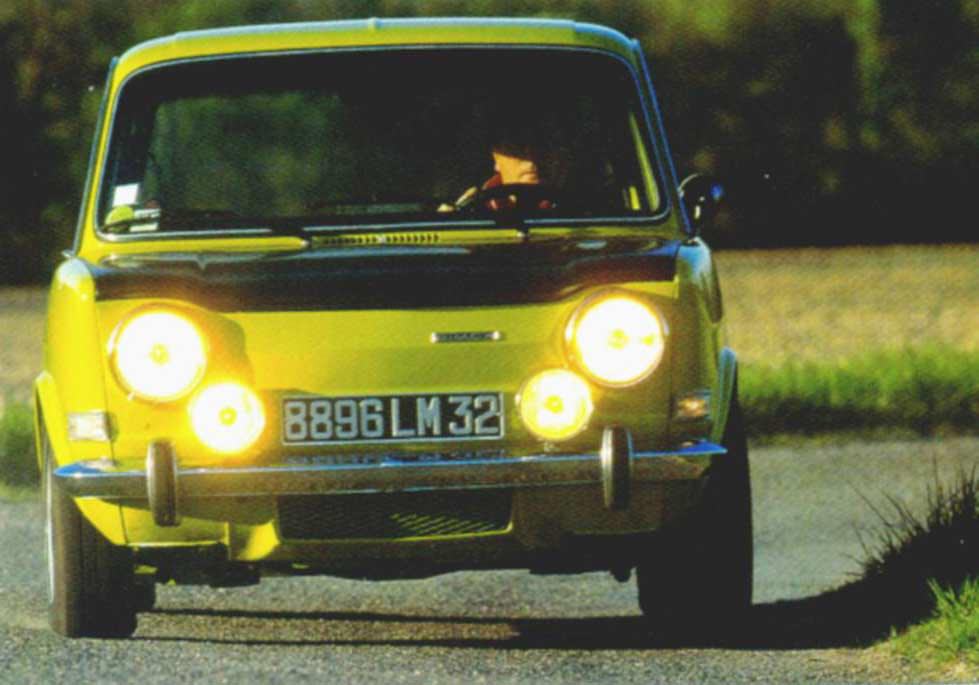
Low profile 13 inch radials appeared on high performance models, with larger
sizes on the back than on the front. Racing seats, gauges, fender
flares and stripes were also part of the package. The fuel tank
remained in the middle of the car, where it was safe, but the battery was
moved to the front to improve balance. The icing on the cake came in
1977, when the Simca factory introduced the Simca 1005 Rallye 2. It
offered all of the above, plus a Group 2 kit that bumped the horsepower to
110 @ 6,500 RPM. Hot stuff for a 1,500 pound car.
Fans of luxury will be pleased to know that, during the 1970s, you could
also buy a Simca 1000 with a semi-automatic transmission, crushed velour
upholstery, fold-down rear seat, tinted windows and metallic paint.
And, of course, a basic economy model was always available.
The Bertone Coupe.
The Simca 1000 Bertone coupe was introduced at the Geneva auto show in
March, 1962. Although manufactured in much smaller numbers than the
sedan, the 1000 Bertone coupe was another trend setter in terms of
automotive fashion. GM's 1965 Corvair Sport Coupe and Fiat's 1965 850
Sport Coupe borrowed styling elements freely from this special Simca.
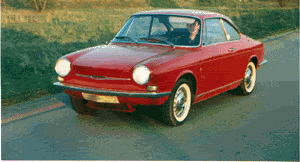
What Happened?
This company was on a roll and Chrysler liked Simca so much that it began to
ship Simca 1000s to America to steal sales from the Volkwagen Beetle.
But the cars were never designed for American highways and, like that orphan
on the banks of the Passaic River, most were cast away by their owners in a
few short years.
Simca 1000s were more happily received in Europe. Sales rose and fell,
but over 1.6 million were made before they were replaced in the Simca lineup
by, of all things, a French version of the Plymouth Horizon!
Sources. A number of web sites served as sources for much of the
information in this article, especially Matt's Simca History Pages, the
Simca Racing Team Website, and the
Simca Heckmotor IG Website.

Corvair - The most innovative cars and trucks ever produced in America!
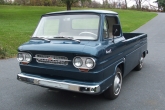
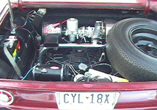
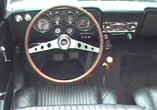
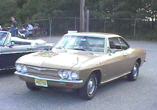
Click HERE to go back to the NJACE Home Page. Edited by redbat01@verizon.net on 10/23/2023